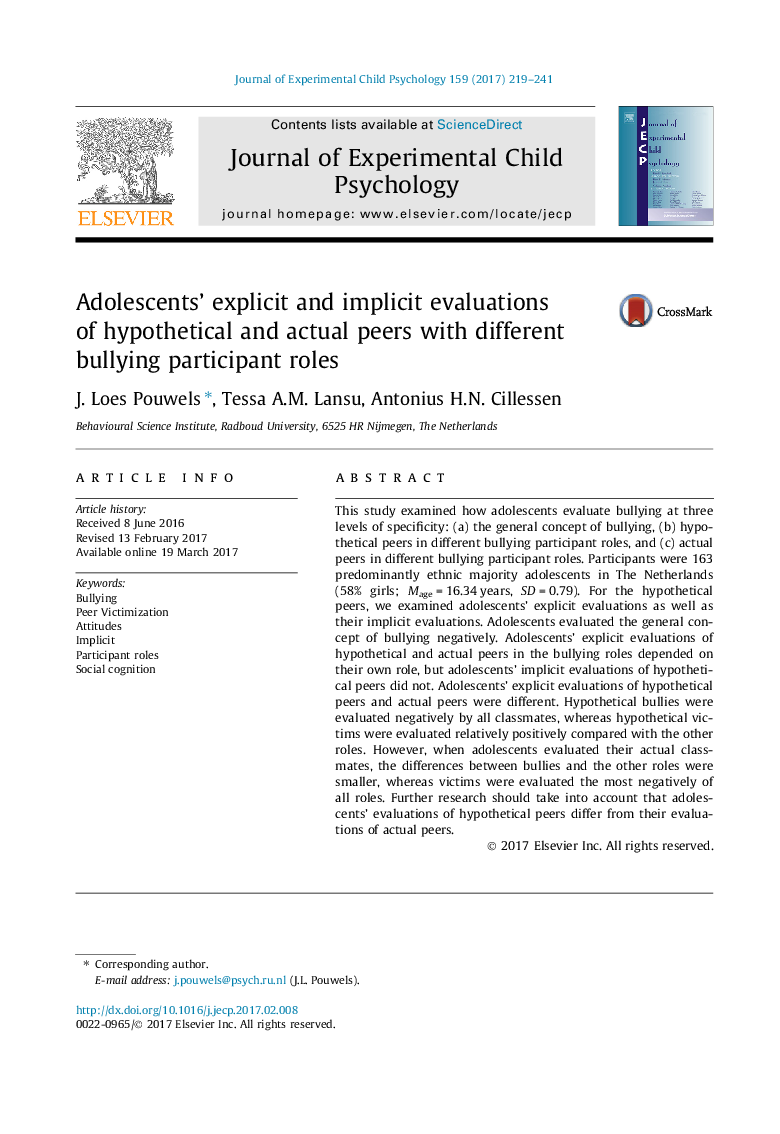| Article ID | Journal | Published Year | Pages | File Type |
|---|---|---|---|---|
| 5039990 | Journal of Experimental Child Psychology | 2017 | 23 Pages |
â¢Evaluations of hypothetical/actual peers' bullying involvement and bullying in general differ.â¢Actual bullies are relatively more positively evaluated than hypothetical bullies.â¢Actual victims are relatively more negatively evaluated than hypothetical victims.â¢Adolescents have relatively positive associations with defending on an automatic level.â¢Adolescents' explicit evaluation of peers depends both on their own and peers' participant role.
This study examined how adolescents evaluate bullying at three levels of specificity: (a) the general concept of bullying, (b) hypothetical peers in different bullying participant roles, and (c) actual peers in different bullying participant roles. Participants were 163 predominantly ethnic majority adolescents in The Netherlands (58% girls; Mage = 16.34 years, SD = 0.79). For the hypothetical peers, we examined adolescents' explicit evaluations as well as their implicit evaluations. Adolescents evaluated the general concept of bullying negatively. Adolescents' explicit evaluations of hypothetical and actual peers in the bullying roles depended on their own role, but adolescents' implicit evaluations of hypothetical peers did not. Adolescents' explicit evaluations of hypothetical peers and actual peers were different. Hypothetical bullies were evaluated negatively by all classmates, whereas hypothetical victims were evaluated relatively positively compared with the other roles. However, when adolescents evaluated their actual classmates, the differences between bullies and the other roles were smaller, whereas victims were evaluated the most negatively of all roles. Further research should take into account that adolescents' evaluations of hypothetical peers differ from their evaluations of actual peers.
